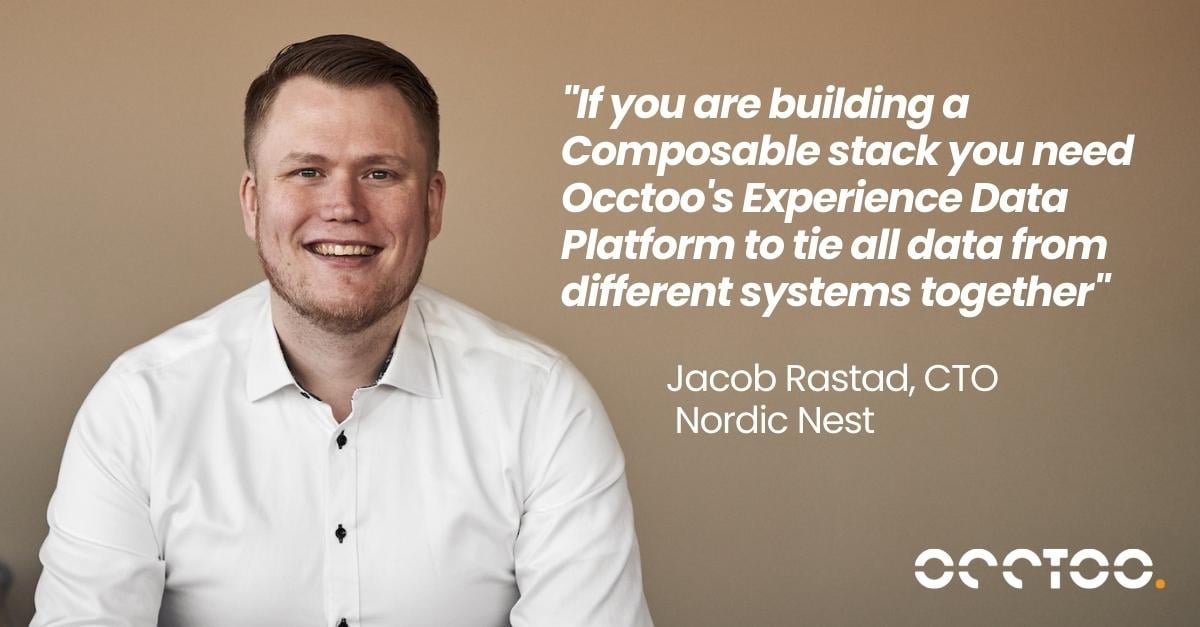The digital surface of a company looks much different than it did five years ago; it is no longer limited to the web only, and customers today expect a seamless omnichannel experience when interacting with your brand through different channels. And so it goes without saying that digital leaders need to create a better foundation for a more agile and flexible way of working and launching new digital initiatives – the answer to this is to build a Composable architecture.
To build your tech stack with a Composable architecture you create an ecosystem of individual systems sharing their data via APIs. This modular setup enables a business to rearrange and reorient as needed, depending on external or internal factors like a shift in customer values or a sudden change in supply chain or materials - but there are complications to consider.In this article, I discuss potential problems you could face with Composable architecture, what Digital Experience Composition is, and why it could be the answer to your Composable Architecture chaos, resulting in a highly intuitive tech stack that makes your role and your team’s tasks easier than before.
Here’s the big issue you’ll face when you switch to Composable architecture
While going the Composable way offers you the benefit of making your data highly available in various APIs and ready to be consumed by developers, it also means that you now have all your data spread out over various APIs, in different formats, and in shifting scalability for your developers to handle, interpret and combine.
The solution for many organizations is to begin a large project of unifying the data; creating data lakes and integrating all possible data into one system, one system to rule them all. Projects like these consume time and resources and very often produce a behemoth solution that is hard to maintain going forward.
I have a great read for you on this very issue, check out Should I build or buy my data layer? the pros and cons
Avoid complex integrations when you use Digital Experience Composition (DXC)
The term Digital Experience Composition (DXC) was coined by Gartner in 2022, but the technology has been available under other product names for approximately four years. Promoted most prominently by Occtoo in the form of an Experience Data Platform.
The three main enabling components of DXC tools are FEaaS, an experience builder, and an API integration mediation layer. In combination, these capabilities create a powerful solution. - Gartner, The Hype Cycle for Digital Commerce 2022 Report
DXC is an emerging technology used to orchestrate multiple digital experiences in a headless, decoupled, composable tech stack. Developers integrate different sources of data only once, and the data can be re-used over multiple experiences. The setup allows developers to hand the day-to-day management in no-code environments back to digital teams and business users, and there is no need to conduct a complex integration project for every single project anymore.
With your data no longer spread out over different APIs; you now have all the relevant data in one place, this is when you can start combining and unifying the data, making sure that the data is in a format suitable for your immediate need.
Your digital teams can work with the different data sets intuitively, using visual tools to easily make sure that the data is correct and usable. After all, it is the digital teams and not the developers that have first-hand knowledge of customers, products, and all other entities that are needed to create a digital initiative. They are the ones that understand how to segment the various data sources for each experience.
With the explosion of no-code development tools lately, it is very easy for a digital team today to ingest data and display this using pre-built components and templates.
Watch this video for an introduction to Occtoo’s no-code digital experience platform
Occtoo provides a perfect Digital Experience Composition solution
Occtoo's Experience Data Platform is a Digital Experience Composition tool built to support businesses in creating new relevant digital customer experiences with speed and scale. We help digital teams move into a new state, where they spend less time integrating and moving data, and more time being creative and innovating with data - shipping more digital initiatives to the market.
Whether you are using no-code tools such as Builder.io, Shogun, or Vue Storefront, or if you develop a more customized solution using available frameworks such as NextJS, Gatsby, or Remix, the flexibility to get the right data in the right format for each application enables your digital teams to be more agile without the need for complex integration for each project.

With Occtoo, digital leaders at companies such as Cartier, Fjällräven, and Nordic Nest have been able to deploy 4x more initiatives from their CX roadmap, re-use data across their digital experiences, and spend less time and money on integration and more on customer innovation.

